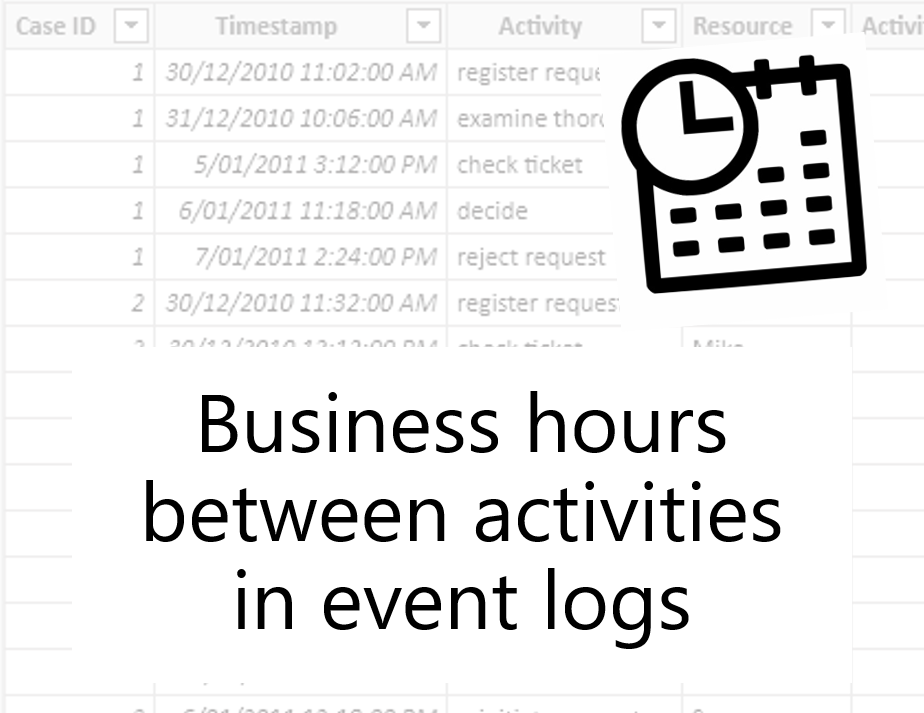
Rounding datetimes to nearest minute or hour in Power Query
One of the most common culprits behind a large data model in Power BI is the presence of columns with a high cardinality. A common scenario where this occurs is when you’re dealing with event data, where you have precise datetimes down to the second for a series of events. For many applications, knowing the precise second that an event occurs isn’t as important as knowing what minute or hour it occurred in. In this post, I’ll introduce a Power Query function you can use to round a datetime field down to the nearest minute, 15 minutes or hour. This can reduce cardinality and lead to a more compact report file size.

Calculating business hours between activities using DAX
Whenever you're working with event data, you often have data on activities performed, and the time at which they were performed. This data is useful for process mining, where you can track durations of cases that follow a process, identify bottlenecks in the process and identify instances where the intended process is not followed. In this article, I'll walk you through how you can track the time between events, so you can note how long something spends in a given state.
